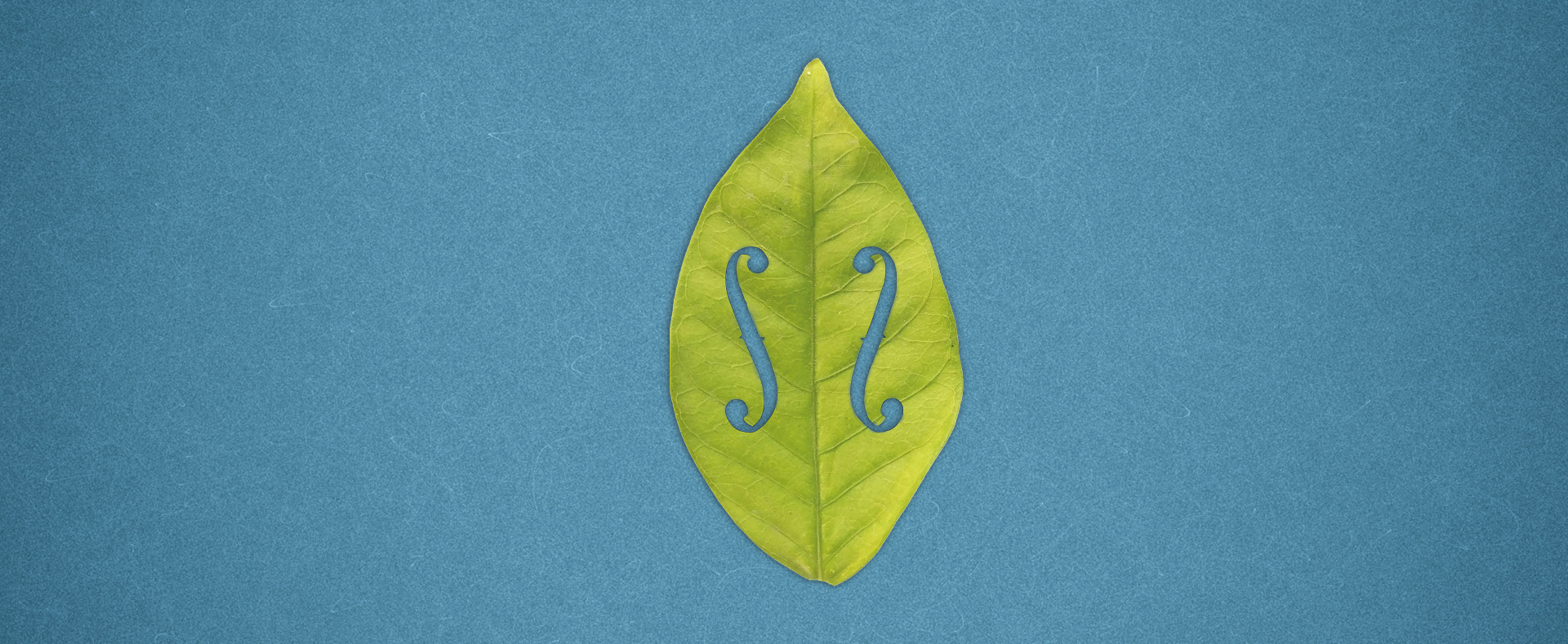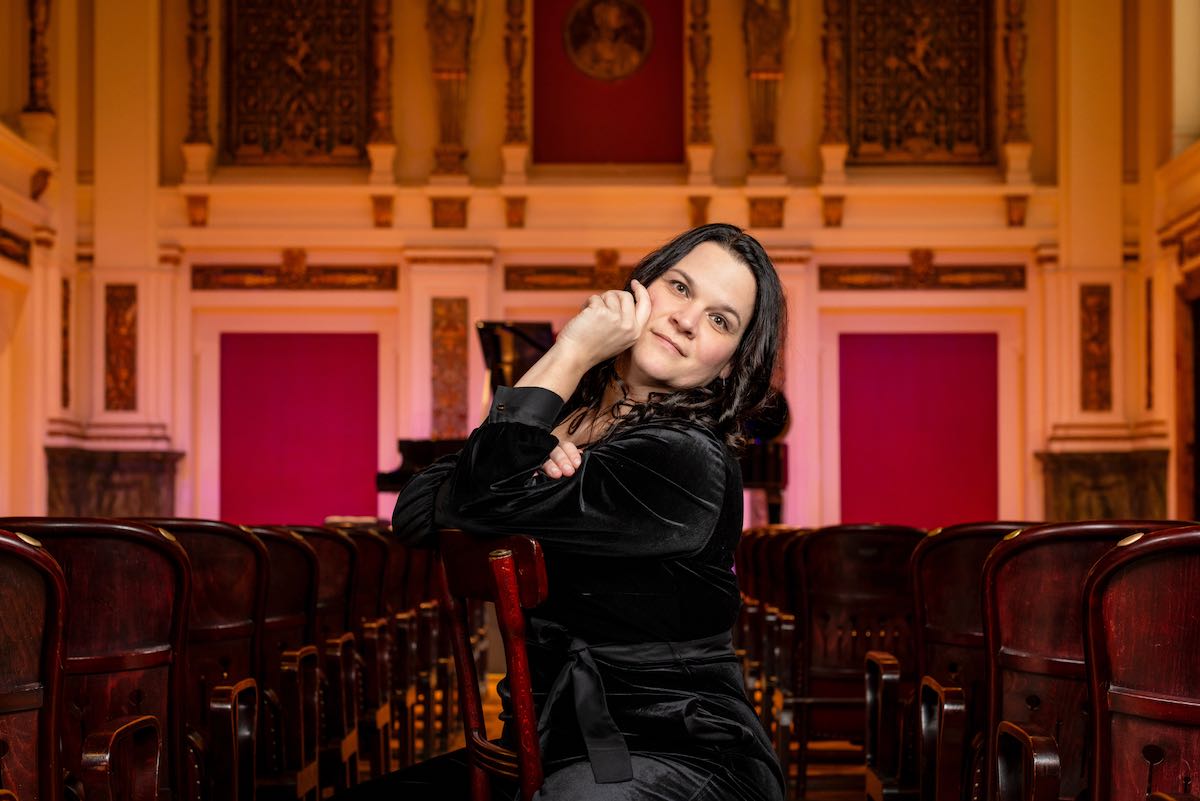
Dear audience, dear artists, dear organisers,
The voice of art speaks in many different ways, it calls for change, wants to shake things up: sometimes like a hurricane, other times like a sea breeze.
In the midst of upheaval and change, art reminds us that beauty and inspiration exist despite everything. Works of art, small and large, new and familiar, can give us the strength to keep thinking and creating. So it is not surprising and yet at the same time what people are prepared to give in order to create shared, lasting experiences.
Friedrich Nietzsche wrote: "The earth has music for those who listen." Nature herself is known to be a very great artist and it is up to us to listen to her and finally act in accordance with her. For this reason, the Ehrbar Saal's motto for the coming season is "Mother Nature". All concerts that reinforce this motto will be labelled with the new Mother Nature symbol, the green leaf.
Cathrin Chytil

Cathrin Chytil © Attila Kovacs
Mother Nature and art
in the 21st century
BETWEEN The link between artistic inspiration and natural phenomena reveals a fascinating field of research that looks at creative imagination and empirical realities in equal measure. Artists of all genres have always been inspired by the manifold phenomena of nature, from the beauty of landscapes to the acoustic textures of the environment. Nature influences people's sensibilities; it has been and continues to be the inspiration for many great works due to its profound and moving power. Why is that so? What effect does the sea have on the productive work of a composer? How does the view of the cloudy cinema sky? Or into the starry night, into an open, infinite darkness? What is the effect of the sight of a river, cold and clear, and that of a large, heavy stream? What is the effect of the Alps and of a single mountain, a volcano such as Mount Fuji? What is the effect of shadows of leaves and trees on white walls, of plane trees and poplars in the wind, of a swan silently travelling over the dark lakes of the Salzkammergut? What is the effect of falling snow, drizzling rain? These phenomena leave their mark on the creative process and the list could go on and on. Just looking out of the window, no matter what kind of nature, gives rise to a certain feeling. A mixture of the discrepancy between inside and outside that turns you into an observer of an event in which you yourself do not participate.
The absence of nature also plays a role. Because where there is no longer any nature, where it is perhaps unconsciously felt to be lost, a longing for it arises and a contrast is created that has an effect. It is the contrast between cultural and natural landscapes. There is also another contrast, that between nature as we experience it and the upheaval it is undergoing at the same time. These effects lead to inner contrasts in perception and thus also to effects in artistic perception and feeling.
The brightness of the earth has dimmed. The light has darkened again, as if there were a permanent veil over the sky.
This concerns the climate crisis, but also the changing political events, the wars and the shifting socio-political priorities.
The light of the earth is wounded. As if by a thing that penetrates us all, must penetrate us all, because these wounds of light cannot bounce off anyone. But: many people carry an inner light, even if they function outwardly, are compliant, do not rebel, their light can be persistent and hard, shine powerfully - their way of bringing about change works differently. Artists will not allow themselves to be carried away defencelessly by worsening, darkening events. The events, the tangible, visible ones, but also the still invisible ones, leave their mark.
These traces - which are cracks, disharmonies, disruptions and catastrophes - will be concealed in some places and
in the artistic expression of others. This is an individual decision by the creator. The forms of this expression, this showing, can differ diametrically. It can be both comforting beauty and stirring activism.
Is art currently becoming a narrative, a kind of paradigm for the climate crisis?
Will it later be possible to trace the change in climate on the basis of the artistic work of a certain period of time?
Compositions today are and have always been inspired by nature. Musical works in which this is clearly the case range from classical pieces such as Beethoven's "Pastoral Symphony", Franz Schubert's song "Mother Earth", Edvard Grieg's "Morning Mood", Johann Strauss' "Spring Voices", Antonio Vivaldi's "Four Seasons", to contemporary works such as Johanna Doderer's "Schneerosen Walzer", Ludovico Einaudi's "Elegy for the Arctis", which openly addresses the climate crisis, as well as John Luther Adams' "Inuksuit", which captures the vastness and silence of the Arctic landscape.
There are also numerous examples of the influence of nature on paintings in the visual arts. From the impressionist paintings of Claude Monet, which capture the fleeting nature of light, to those paintings that depict the signs of industrialisation and the first human impact on nature, such as those by Karl Eduard Biermann, to the abstract landscapes of Georgia O'Keeffe, which explore the organic forms of nature on the one hand and focus on places or things that have a kind of "eternal beauty", such as bones in the desert or lonely, black hills on the other. The contemporary visual artist Angela Andorrer deals with the preservation of leaves of various plants - it is also about taking and objectifying parts of nature that may one day be lost.
It is often a connection with something archaic. Perhaps you sense the history of your ancestors or your own roots, namely that we humans come from nature and will return to nature, that we ourselves are nature. Many artists experience states of identification with trees, meadows, the forest or simply the earth, which inspire them to create intense, even spontaneous works. They sometimes have the impression that nature has whispered something to them. It feels as if something has come to light that was already there before.
On a scientific level, the neurological basis of artistic inspiration is being investigated, with researchers finding that aesthetic sensations are linked to certain patterns of neuronal activity. The ability to grasp beauty, change, violence or phenomena of nature and transform them into artistic forms of expression thus reflects a complex interaction between cognitive processes and emotional reactions.
The visible destruction of our "Mother Nature" - the nature that produces everything and that we ourselves are - be it the deforestation of rainforests, the melting of glaciers and polar ice caps, pollution, warming, changes in the flow of water, the increase in extreme weather events such as heat waves, storms, flood disasters, the extinction of animal and plant species such as butterflies, bees or many bird species in Europe have a direct influence on the development of the arts. Artists often find themselves forced to redesign, rewrite or change their works after major disasters have occurred. War also drastically changes the works of artists.
Artistic production and action are therefore necessary as a reflection of society and as a creative expression of human experience and action in relation to the natural world. This was the case in the past and it will continue to be the case - it is currently more of a necessity than ever.
Who else is supposed to shake things up if the artists on stage don't do it?
The concept of "Mother Nature" stands in a kind of opposition to a male, patriarchal, capitalist world. Societies today increasingly want to dissolve these conceptual dichotomies; it is about non-binary thinking, about avoiding gender categorisation. Unfortunately, however, it is still the case that women or non-binary people rarely influence the fate of the world at the political levers. Our earth as we know it is mainly ruled by men. That's why we still want to be able to say "Mother Nature", because the creative production of nature and the birth of human beings is something feminine and worth protecting. And the protection of our nature is also important in this time in which we are currently living.
The interplay between nature and art is fascinating, mysterious and painful. What touches people is what nature produces. What destroys nature is what hurts people. At the same time, both society and the economy lack the willingness to make small changes, shifts, in favour of the environment.
It is to protect what conditions us. Music is a powerful force.
For this season, we have developed a leaf symbol to emphasise all concerts that take up our main theme of "Mother Nature". 